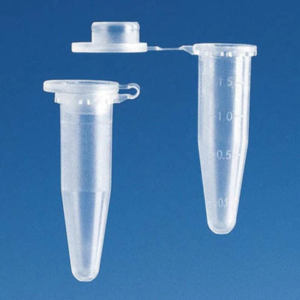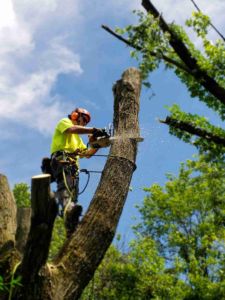Microcentrifuge Tubes are used to collect samples in laboratory centrifuges. They can withstand high-speed rotation and extreme temperatures. They are autoclavable and resealable.
Lab centrifuges can separate solids, such as insoluble compounds or cell organelles, from liquids by spinning them at high speeds. To balance the load, blanks or samples of equal mass must be placed opposite each other.

Designed to meet the needs of laboratory applications requiring small volumes of liquid samples, these 0.5 mL microcentrifuge tubes are made with a flat top cap that’s easy to open and close and offers a tight seal for reduced evaporation rates. They also have a flat writing surface on the side for easy labeling. These microcentrifuge tubes are premium polypropylene plastic and can withstand up to 20,000 x g centrifugation. The thicker wall of these tubes helps to ensure that they can handle the rigors of the laboratory environment and prevent sample loss due to centrifugation.
Unlike glass, these polypropylene tubes are lightweight and can be handled easily by a single hand, making them easier to work with and store. They are also durable and will withstand repeated use. This means that they will last longer than other laboratory products that are made of glass. These microcentrifuge tubes are autoclavable, which allows them to withstand high temperatures. This makes them an excellent choice for any laboratory that requires a high quality centrifuge tube.
These sterile microcentrifuge tubes are made from high-clarity, low binding virgin polypropylene that’s certified RNase, DNase, DNA and Pyrogen free. They are also non-pyrogenic and meet the latest PCR purity standards. Their 16 mm diameter is identical to that of standard 15 mL centrifuge tubes, so they will fit most existing rotors. This reduced the risk of pipettor shaft contamination, and the 56 mm total tube length is short enough to allow standard 1 mL tips to reach the bottom of the tubes.
These microcentrifuge tubes are ideal for many laboratory applications including PCR, DNA extractions and other molecular biology processes. They can also be used to store small liquid samples or reagents. The polypropylene material is resistant to most chemical reagents and can be autoclaved for safe storage and processing.
1.5 mL
These tubes are used in labs for various tasks that require centrifugation, such as soil testing and medical tests. They are typically made from glass or plastic and can be autoclaved for sterilization. They are also often color coded to help identify samples. Unlike test tubes, which handle chemicals, microcentrifuge tubes are designed to hold liquids and other solids.
These high-quality sterile microcentrifuge tubes are ideal for a variety of molecular biology applications, including nucleic acid and protein extractions and sample processing. They are a great choice for use with the Eppendorf Safe-Lock centrifuge lids, which help prevent tube leakage and accidental opening during agitation. They are made from thermoplastic, chemical-resistant polypropylene that has been optimized for clarity and strength. They are rated for temperatures up to 120 deg C, and their attached flat cap provides a tight seal that is easy to open and close, even after repeated use.
The graduated tubes feature a wide, flat surface area that facilitates writing notations or labels. The caps snap shut tightly with a audible click for reduced evaporation rates during storage. They fit standard 5 mL centrifuge rotors and racks with no special adapters needed. They are a great replacement for 15 mL tubes, cutting down on plastic waste and storage space.
These clear GATOR brand 1.5 mL snap-cap microcentrifuge tubes are a great option for your laboratory needs. They are ideal for a variety of molecular applications, including sample processing, centrifugation and storage. They are a great alternative for the expensive, hard to clean glass centrifuge tubes. They are sterile and certified RNase-, DNase-, DNA- and pyrogen free. They come in a box of 500, and the caps stay sealed tight, just like an alligator’s chompers!
2 mL
Boil-Proof Microcentrifuge Tubes with Attached Caps
Thomas Scientific offers a wide variety of disposable 2 mL microcentrifuge tubes with attached caps for safe and easy handling in lab applications. These polypropylene microcentrifuge tubes are autoclavable and can be used for storing, centrifuging and boiling samples. They have large etched graduation marks for easy identification and are resistant to chemicals and temperature fluctuations. These high-quality tubes help ensure that sample integrity is maintained during critical protocol steps.
These 2 mL Posi-Lock Graduated Microcentrifuge tubes have a small, easy-to-open/close cap that locks securely with an audible click and an integrated writing panel for added security and convenience. The frosted lid provides extra writing room and resistance to smearing, while the clear resin allows for excellent visual clarity. They are certified RNase, DNase and pyrogen-free, as well as PCR clean and sterile, making them ideal for sensitive applications, such as enzymatic digestion, plasmid DNA isolation, sample and reagent storage, and endotoxin work.
Boekel Scientific 2 mL Microcentrifuge Tubes with Snap Caps have a flat, frosted lid that facilitates writing notations and snaps closed tightly for the lowest evaporation rates during storage. These polypropylene microcentrifuges are autoclavable and come with molded graduations on one side for easy identification, as well as a convenient label area on the lid. These laboratory-grade tubes are available in bulk quantities of 5,000 to save you time and money while maintaining inventory.
3 mL
A laboratory centrifuge is a piece of equipment that spins samples of liquid at high speeds. Lab technicians place the sample into a tube-shaped container that is inserted into the centrifuge’s slot. The spinning motion causes the denser particles in the sample to gather at the point that is farthest away from the axis, while the lighter particles collect near the center of rotation. This separation is then used to identify the sample’s contents and its components.
Centrifuge tubes are available in several sizes, capacities and materials to fit different purposes. The most popular are made of polypropylene and have a sealing closure. These durable, sturdy plastic containers withstand high centrifugal forces of up to 11,600 x g, making them ideal for applications such as lipid fractionation. They also have a flat top and engraved graduations, so they can be easily labeled with the details of each sample.
Glass centrifuge tubes, which are more expensive and breakable, are less common. Most laboratories now use disposable microcentrifuge tubes, which are a more convenient and economical option. These tubes are created from USP Class VI virgin polypropylene in a sterile manufacturing environment, which is an important factor for labs that work with hazardous chemicals or live organisms. Typically, these plastic tubes are also autoclavable.
A good laboratory will make sure that all its supplies are safe for the entire process, from storage to disposal. The right storage containers and labels help ensure that the smallest of samples are properly labeled and stored for future use. The right containers will also have tamper evident strips and resealable zip-tops to prevent spills, contamination and loss of precious samples. In addition, the best microcentrifuge tubes will be labeled with a quality certificate that includes information such as part number, batch number and expiration date. They will also provide a sterility assurance level and dosage, endotoxin/pyrogen free certification and RNase/DNase/DNA free certification for molecular biology applications.
4 mL
Laboratory centrifuges are pieces of equipment found in many labs that spin liquid samples at high speeds. The spinning action separates the components of a sample by their different densities. Centrifuge tubes are used with these types of lab devices to contain the samples. Lab centrifuge tubes are available in a number of sizes and can be used for many different lab purposes.
Several factors can influence the centrifugal force of a sample, such as the rotation speed of the rotor, the volume of the liquid, the presence of solids, and the viscosity of the liquid. Usually, protocols specify the acceleration of the sample in multiples of g. This value is calculated as the product of the rotational speed (in revolutions per minute) and the radius of the rotor’s circular cross-section.
These microcentrifuge tubes are able to withstand centrifugal forces up to 20,000 x g. They are made of polypropylene and feature a flat, piercable cap with a writing surface on the side. The caps are sealed with a silicone seal that ensures a tight fit and prevents leakage. The caps are also autoclavable and freezable.
These microcentrifuge tubes are a useful tool for molecular biology applications. The polypropylene construction is durable and resistant to chemicals. These tubes are also pyrogen-free. They are tested to be RNase, DNase, DNA, and PCR inhibitor free and meet FDA and ISO standards. They are packaged in a sterile plastic bag that is sealed with tamper evident strips and resealable zip tops to prevent spills and contamination. The bags also include a barcode label and printed contents list for easy identification and tracking. The wide lid rim on these tubes makes it easier to grip and handle the containers.
